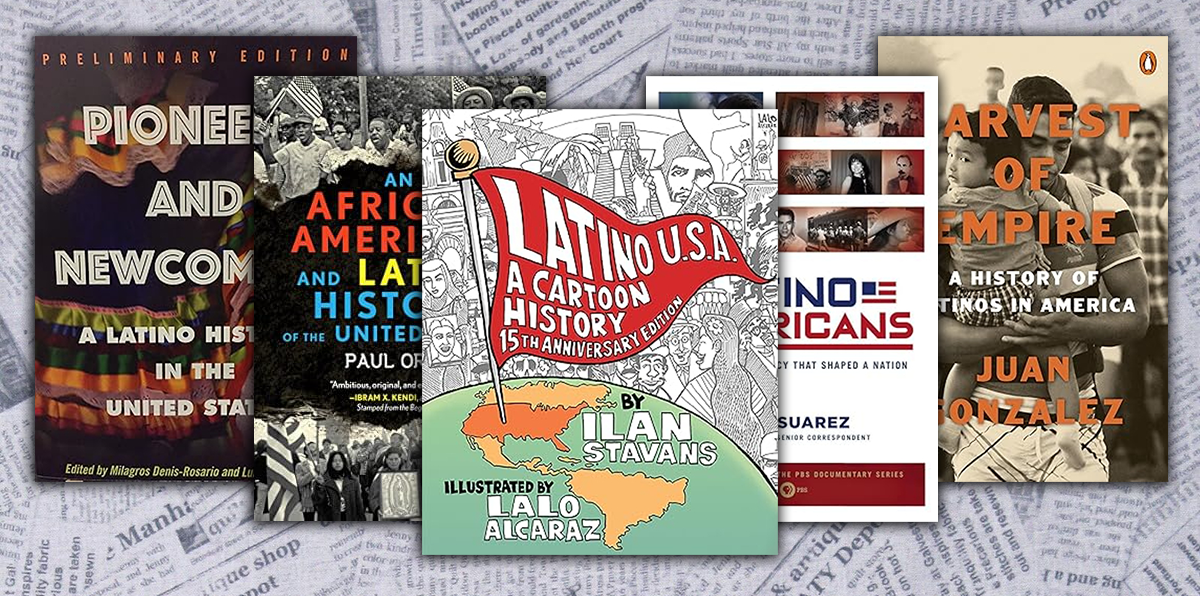Remember history class? How much more fun and engaging would those classes have been if Latinxs were included in the curriculum? How would our self-esteem and sense of identity be better if we saw ourselves in history books and knew about our communities’ amazing achievements and accomplishments? Or the simple fact that we were there in the historical moments that we are quizzed and tested on. U.S. history books purposefully omit Latinxs from their pages, and have been for centuries. Luckily, Latinx authors, historians, scholars, and experts are writing us back into history with their own Latinx textbooks. Continue on to get the reading list for Latinx U.S History 101 written by and for us. Because es tiempo.
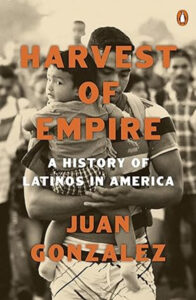
Harvest of Empire: A History of Latinos in America by Juan González
Clocking in at a whopping 560 pages, Harvest of Empire is one of the more comprehensive Latinx textbooks and it teaches us the U.S. history missing from the “mainstream.” The tome covers five centuries in the U.S. – “from the European colonization of the Americas to the 2020 election.” For those who want to double down on Harvest of Empire and its educational information, there is also a documentary by the same name.
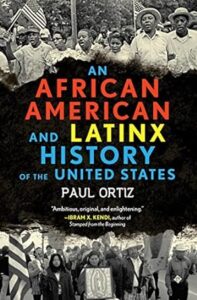
An African-American and Latinx History of the U.S. by Paul Ortiz
Another must-read history book is Paul Ortiz’s An African–American and Latinx History of the United States. In this “bottom-up history” that spans over two hundred years, Ortiz focuses on Black and Latinx communities, specifically how the Global South, civil rights movements, labor organizing, and “the working class organizing against imperialism” shaped our country. This is great if you want to read a U.S. history book that isn’t Anglo-focused and BIPOC-exclusive.
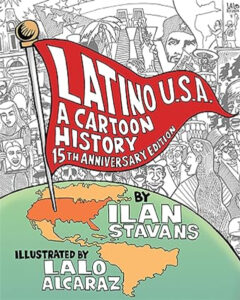
Latino U.S.A.: A Cartoon History by Ilan Stevens, illustrations by Lalo Alcaraz
Non-fiction graphic novels are often educational in a way that isn’t overwhelming or intimidating, thanks to their visual way of teaching that is easy to digest and sometimes downright fun. That’s why Latino U.S.A., penned by Ilan Stavans and illustrated by Lalo Alcaraz, is a great way to learn about American Latinx history. Sections include “Columbus Sails the Ocean Blue,” “Forget the Alamo,” “Puerto Rican Scholar Arthur A. Schomberg,” “Triumphs and Tribulations of the Chicano Movement,” and “Gabriel García Márquez’s Thundering Voice.”
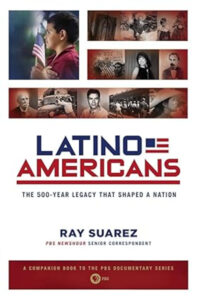
Latino Americans: The 500-Year Legacy That Shaped a Nation by Ray Suarez
Also with an accompanying documentary, Ray Suarez’s Latino Americans: The 500-Year Legacy That Shaped a Nation doesn’t disappoint. Imagine five decades of history that we are not privy to finally being brought to the forefront. Latino Americans covers topics like Manifest Destiny, the Wild West, and the Spanish-American War, showing how Latinxs were always there.
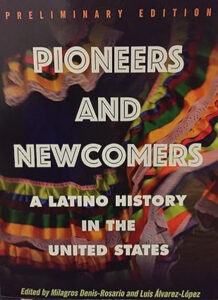
Pioneers and Newcomers: A Latino History in the United States by Milagros Denis-Rosario and Luis Álvarez-López
Pioneers and Newcomers: A Latinx History in the United States, edited by Milagros Denis-Rosario and Luis Álvarez-López, is an actual textbook, here broken up into seven important parts. Go back to school, as you learn about “A Multilevel Analysis of Latinos’ Economic Inequality: A Test of the Minority Group Threat Theory,” “Tejanos, Mexican Immigrants and Mexican American Communities,” “Divergent Latino Immigrant Stories: Salvadorans and Peruvians in America,” “Latino Anti-Black Bias and the Census Categorization” and more in the last of our Latinx textbooks.
